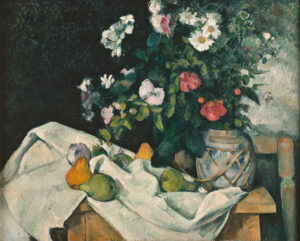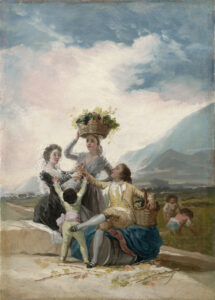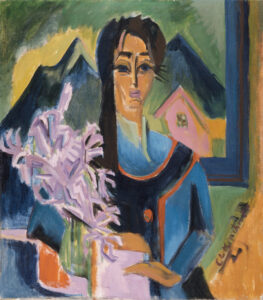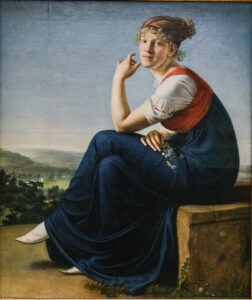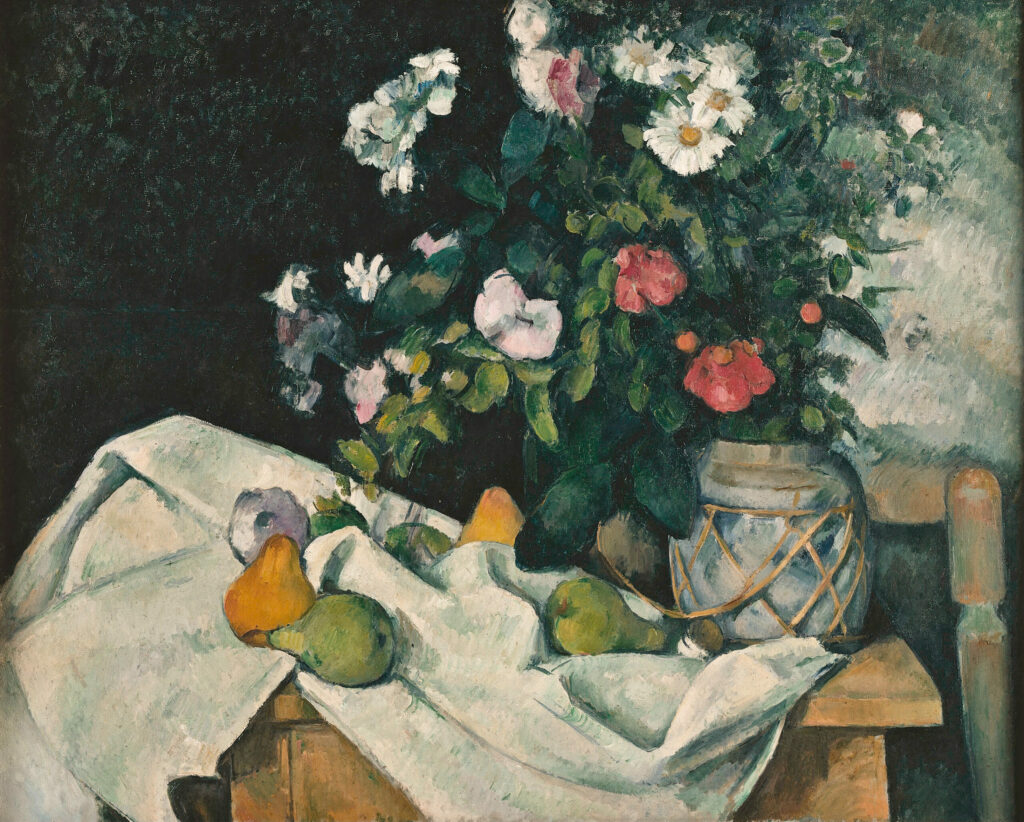
Aix-en-Provence, circa 1890. Paul Cézanne meticulously arranges his familiar objects: the ginger jar, fruits, flowers. He works slowly, sometimes replacing perishable elements with artificial ones. This still life marks twenty years of artistic evolution.
The Geometry of Color
Observe the composition: a long diagonal crosses the white tablecloth. The apex of a yellow pear divides the canvas vertically. On the right, the ginger jar anchors the space, with its white, pink, and red flowers. On the left, the tablecloth rises like a mountain. The fruits offer pure, luminous tones of an almost immaterial intensity. The complementary contrast of yellow-violet vibrates with force. His short, oblique brushstrokes intersect, creating chromatic resonances. In the white of the fabric, different tonalities dialogue: this is Cézanne’s “modulation.”
The Post-Impressionist Revolution
This work illustrates the maturity of the master of Aix-en-Provence. He prioritizes luminous value over local color. Spatial relationships remain deliberately undefined: the chair leg, the back, the table open onto space. Light and shadow possess no independent effect. Color conveys everything simultaneously. Cézanne seeks absolute harmony, splendor in the spatial deployment of things. This approach heralds Cubism.
Paul Cézanne, Pioneer of Modernity
Paul Cézanne (1839-1906) revolutionizes painting by seeking the essential structure of the visible. He produces approximately two hundred still lifes, laboratories for his pictorial research. His influence would mark Picasso, Braque, and the entire 20th-century avant-garde.
Think about it
💭 Why do we spend our lives chasing after movement, when stillness perhaps contains all the truth of the world?
About this work
- Still Life with Flowers and Fruits
- Paul Cézanne
- circa 1890
- Oil on canvas
- 66 x 81.5 cm
- Alte Nationalgalerie, Berlin
- https://recherche.smb.museum/detail/961532/stilleben-mit-blumen-und-fr%C3%BCchten

